What’s in a Name? Japan’s Mountain Kanji Explained
Studying kanji, or Chinese characters used in the writing of Japanese, can leave even the most ardent student exasperated at the best of times, and that’s before they ever open a hiking map. Place names range from tricky to downright impossible, even if you know how to read the kanji normally. Ask most native speakers how to correctly pronounce 水松山 a mountain in Okutama, and I dare say most would wager on Mizumatsu-yama for mizu (water), matsu (pine tree), and yama (mountain). It’s, in fact, pronounced Araragi-yama. Good luck finding any of those readings in your Heibonsha Jitsu.
The three main kanji used to describe areas of high elevation are yama 山 (mountain), dake 岳 (peak), and mine 峰 (peak). To complicate matters, each kanji conveys more or less the same meaning, and they readily overlap. Read on to understand some subtle differences that set them apart.
Yama 山
Highest: Fuji-san 3,776 metres
Yama 山 is the most common term and best describes sloping landforms that rise above low-lying plains. It is often used for independent mountains close to human settlements in contrast to peaks that have steeper terrain and are generally further from inhabited areas. Fuji-san 富士山 is a classic example, as it’s not part of any mountain range. There are exceptions, of course, such as Kaimon-dake in Kagoshima Prefecture, which is an independent peak, yet is prefixed with dake. It’s pronounced as yama, but it is sometimes read as ‘-san’ or ‘-zan’. Kanji used for mountain summits are sanchō 山頂 and chōjō 頂上. You sometimes also see sanmyaku 山脈 (mountain range), sanchi 山地 (mountainous region), and kōchi 高地 (tableland).
Dake 岳
Highest: Kita-dake 3,193 metres
Dake 岳 or less commonly 嶽 also denotes mountainous areas, but refers more to rugged, high, and steep mountains. Places where mountains form together are often called dake. Iconic archetypes include Aino-dake in the Southern Alps and Iō-dake one of the major peaks of the Yatsugatake Mountains. Interestingly, of the 21 mountains in Japan over 3,000 metres only Fuji-san, Ontake-san, and Tate-yama are not prefixed with dake. Ontake-san 御嶽山 is a bit of an odd one though, as it includes both dake and san. In the 1000 Famous Japanese Mountain list, there are only five mountains that have the 嶽 variant. As mentioned above, there is no unified definition that fully accounts for the differences between yama and dake.
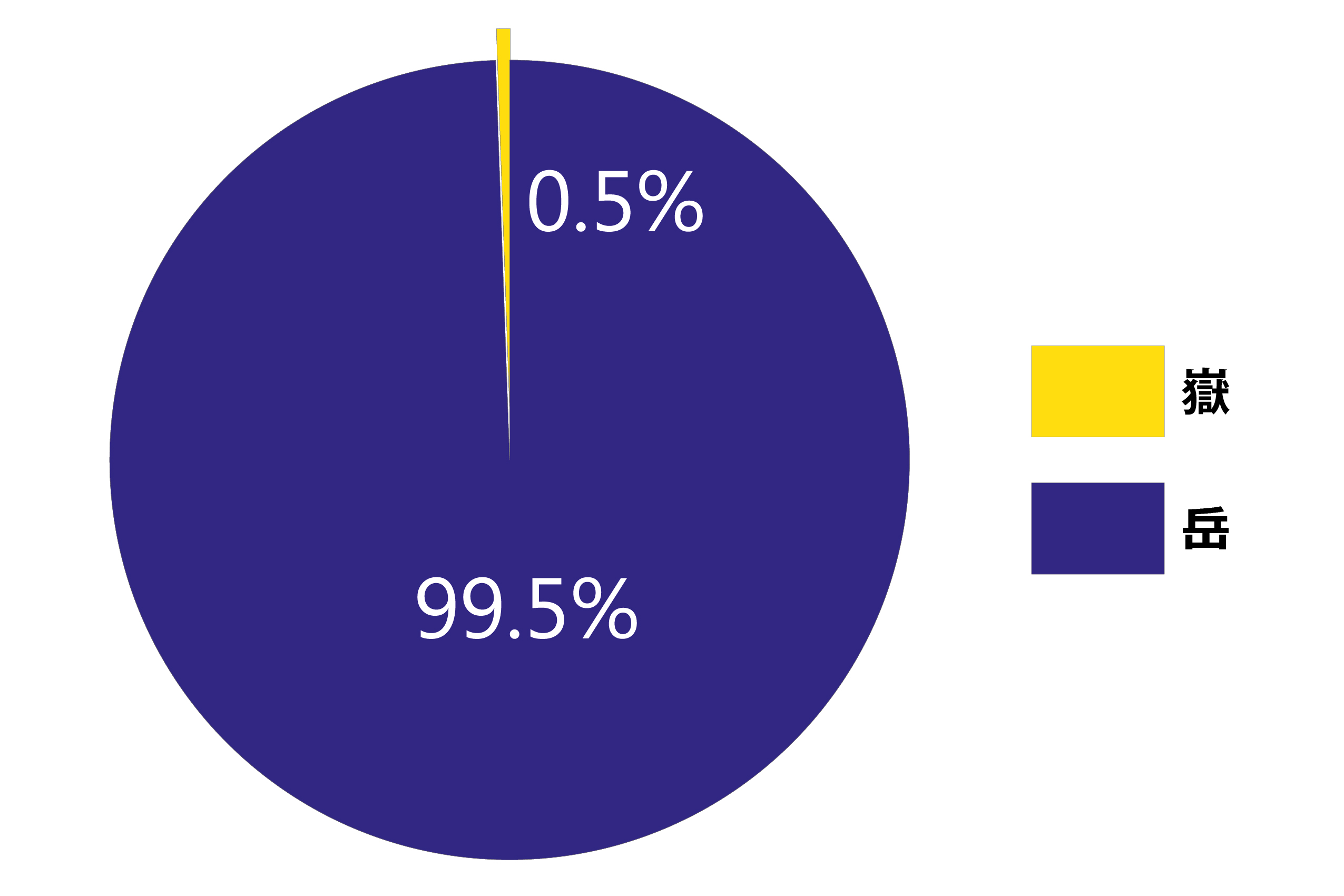
Pie chart 1. Breakdown of dake kanji variants commonly used in Japan. Data via: Yamareco.
Mine 峰
Highest: Kenga-mine (Ontake-san) 3,067 metres
To muddy the waters, a peak can also go by the alias mine 峰・嶺・峯. There are three different kanji variants that specify the same meaning, though the 峰 kanji is most commonly used. Mine especially refers to a conspicuous part along a mountain ridge. In other words, it tends not to refer to the entire mountain but a prominent high feature or even the ridge itself such as the Sasago-mine featured in the cover photo. It is read as mine as in Kiriga-mine 霧ヶ峰 but can also be read as hou, as in 五六峰 Goroku-hou or rei, as in Daibosatsu-rei 大菩薩嶺. Saikōhō 最高峰 is used for the highest point or pinnacle of a mountain range. The term mine can also refer to the back or spine of a kitchen knife or Japanese sword.
The distribution of mine is also noteworthy, as 峰 it’s concentrated in the old Echigo Province in what is modern-day Niigata Prefecture, while 峯 is centred around Kii Province, or Kishū, in present-day Wakayama Prefecture. Out of the 568 recognised ‘mine’s’ dotted across Japan, 峰 reaps first position with 458, or a whopping 80 percent; next comes 峯 with 77 (14 percent); and finally 嶺 with a lowly 33 (6 percent).
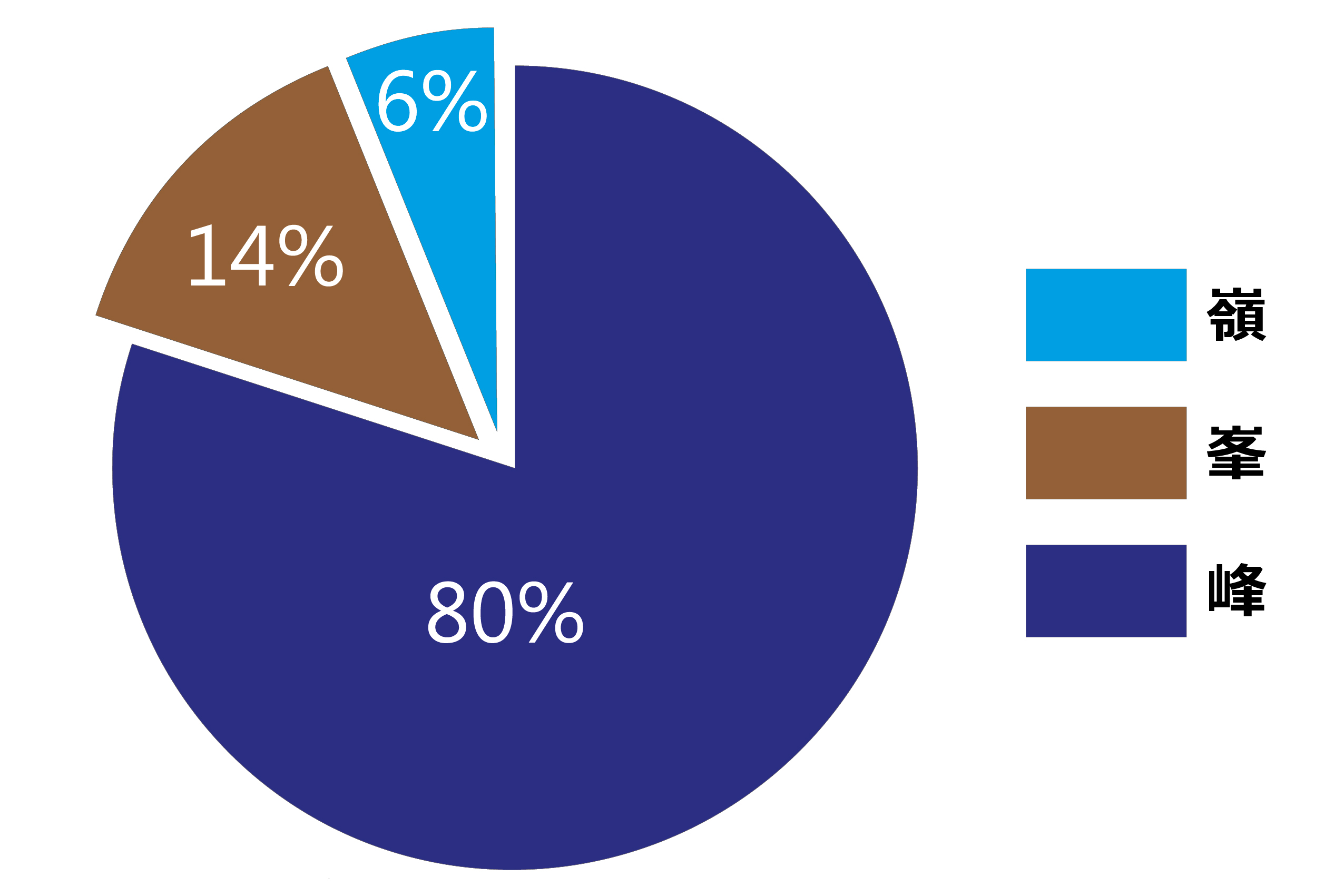
Pie chart 2. Breakdown of mine kanji variants commonly used in Japan. Data via: M. Higashide.
It’s important to note that individual mountain names are decided according to the history and customs of the local area. The Geospatial Information Authority of Japan (GSI) doesn’t make a clear distinction between yama, dake, and mine.
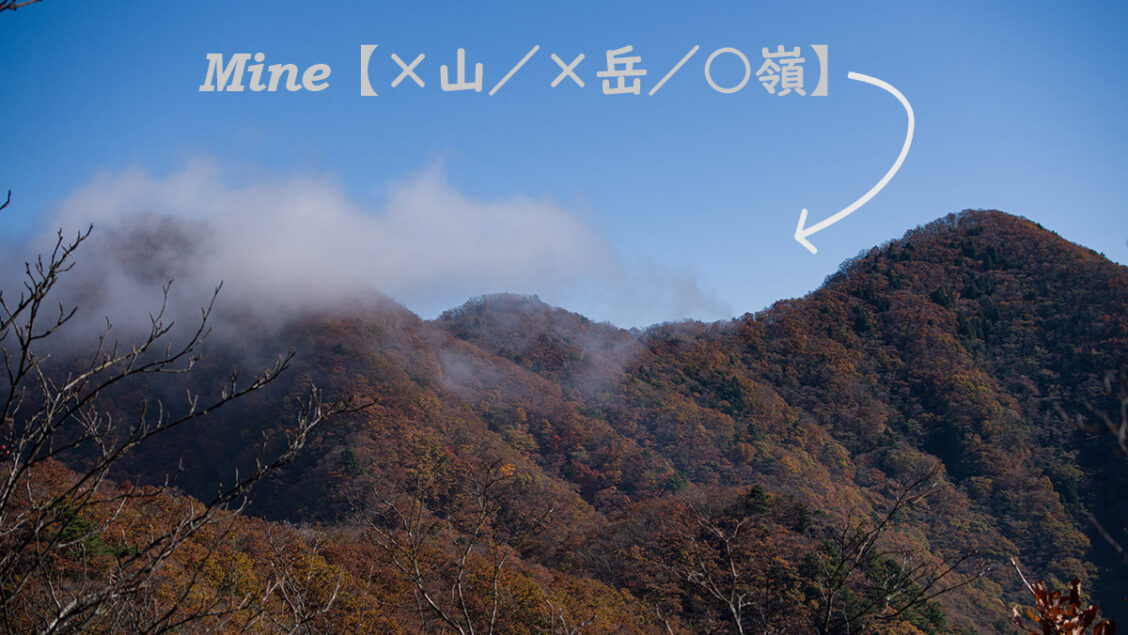
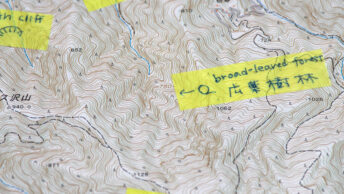
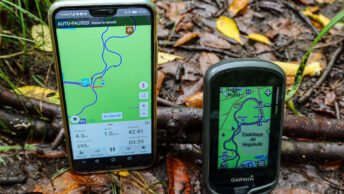
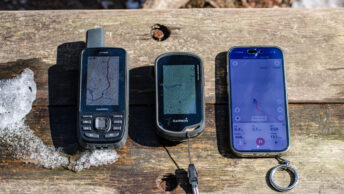
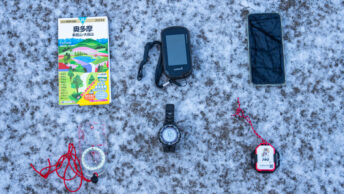
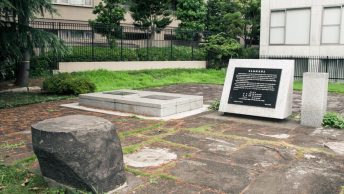
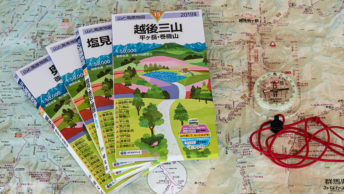
Good one, David – thanks for enlivening a grey Sunday afternoon and opening up an entirely new Meizanological field. The regional variations you point out, such as the popularity of “-mine” in Echigo are particularly interesting. Also the fact that Fuji-san, Ontake and Tateyama are “yama” and not “dake”, although over 3000 metres. I was wondering whether this had something to do with their status as religious mountains – but then there is “Ontake”, which has ‘take’ its name. And a literary name for Mt Fuji is “Fugaku” (富岳). And, when you look at the eight peaklets round the crater rim, their names end in either “-dake” or “-mine” but not in “-san”: Oshaidake, Izudake, Jojudake, Komagatake, Mushimatake, Kengamine, Hukusandake, and Kusushidake. Oh dear, my head it starting to hurt ….
Thanks for your thoughts, PH. It would seem adding -san to Fuji might have been done to marry all the -mine and -dake into one unified image. No doubt many mountains wavered for a period before settling upon a fixed name. As Rishiri-zan, -san, or -dake or continues to do until this day.
Why are some mountains over 3000 metres but are not counted in the 21 for example in the Minami alps Naka Shirane is over 3000 metres but not included.
In the Kita Alps Gendamarne is also over 3000m and isn’t included
Hi Chris, thanks for the question! It’s a good one, and I’ll try to answer it as best as I can.
Not all mountains over 3000 metres in Japan are included in the list of 21 three-thousanders. This can seem puzzling, but the reasons lie in the criteria used to define what counts as a “distinct peak.” Here’s a bit of a breakdown:
Prominence: A mountain’s prominence, or the vertical height between its summit and the lowest contour line encircling it and its parent peak, is a key factor. If a peak has low prominence, it may be considered a subsidiary or secondary peak of a nearby “main” mountain rather than a separate mountain in its own right.
For Naka-Shirane (Minami Alps), its prominence is insufficient compared to neighbouring peaks like Kita-dake or Aino-dake, so it’s treated as part of the Aino-dake massif. Similarly, Gendarme (Kita Alps) is a rock pinnacle and considered a ridge peak of Oku-Hotaka-dake.
Cultural and Historical Significance: The lists of “famous peaks” or those “counted” often reflect cultural or historical perceptions of what constitutes a “mountain” worth recognising. Peaks that are close to larger, more distinct summits may be overlooked, even if they meet the elevation threshold.
Subjectivity of Lists: Lists like the “21 peaks over 3000 metres” are human-made constructs, often influenced by convenience, visibility, and significance to climbers or mountaineers. In some cases, a peak might meet all the technical criteria but still not be included due to its lack of prominence or distinctiveness.
This specifically happens in the Minami and Kita Alps:
Minami Alps: Many peaks are part of broad ridges, with less dramatic separation between summits. This makes prominence a key factor in deciding which peaks are recognised as distinct.
Kita Alps: The rugged terrain often has minor peaks above 3000 metres that are more like “points” on a ridge rather than independent mountains.
In summary, while Naka-Shirane and Gendarme meet the elevation criterion, they are omitted because they lack sufficient prominence and are viewed as secondary peaks rather than separate mountains.
I hope this helps!
Cheers Dave
Thanks for the insightful response.
And also thank you for the help over the summer for my Minami alps traverse which I was successfully able to complete. That’s where I realized that Naka-Shirane wasn’t on the list and I had known that Gendarme was over 3000 metres so when I looked at the list I noticed they weren’t there.